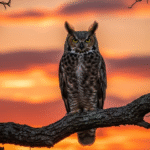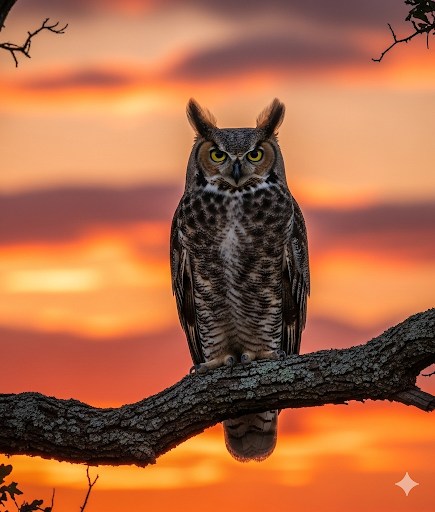The sun has gone down. The day has come to a peaceful end. Driving along the small dead end road with the headlights illuminating the way. Wind running by the windows. A shadow forms just outside of the headlight beams. Silent, troubling, growing. To the right side, just barely lit by artificial light, a thing is forming and it’s getting larger. Probably 3 feet in length or more and growing wings. As this bird takes flight, whole stories are being told in the mind. Miles seems to have been driven but it’s on a few rotations of the tires. An owl, wider than the truck in wingspan, has taken to the air next the machine that startled it. Seconds later it veers off into the treeline, forever leaving an impression of awe and curiosity.
Bird of Epic Tales
For centuries, the haunting call of the owl has stirred the human imagination, weaving a rich tapestry of folklore and superstition across cultures. In some traditions, the owl is a harbinger of ill omen, its silent flight and nocturnal habits associating it with death and the supernatural. The ancient Romans, for instance, believed the owl’s hoot foretold a coming demise, and its appearance was often seen as a bad sign. Similarly, in parts of the British Isles, the cry of a barn owl was thought to predict a storm, and seeing one during the day was considered a grave misfortune. These superstitions often stem from the owl’s mysterious nature; its ability to turn its head nearly 360 degrees and its silent, ghost-like flight in the dark have long made it an object of both fear and fascination.
Yet, not all folklore paints the owl in a sinister light. In many other cultures, the owl is a revered symbol of wisdom, knowledge, and protection. The ancient Greeks, for example, associated the owl with Athena, the goddess of wisdom, and it was a symbol of her foresight and strategic mind. To them, the owl’s large, all-seeing eyes represented a deeper understanding of the world, and it was often depicted on coins and pottery as a sign of intellectual prowess. In some Native American traditions, the owl is seen as a guardian of sacred knowledge and a protector against evil spirits. It is a creature of the night, yes, but one that sees what others cannot, guiding those who seek truth in the darkness. This duality in its symbolism—from a creature of dread to a beacon of wisdom—highlights the powerful and enduring role the owl plays in the human psyche, a testament to its mystique and its profound connection to the unseen world.
Complexity of Feelings
The duality of the owl sighting creates a moment of profound discontinuity, a feeling that exists in a space between worlds. There’s the breathtaking joy of seeing this magnificent, elusive creature, but also a shiver of dread—a belief that its silent presence carries a dark omen. This is the sublime, a fascinating contradiction that merges beauty and fear. The owl becomes a living embodiment of the mysterium tremendum, an experience so powerful it leaves us both awestruck and terrified.
Ultimately, the owl reminds us that even in nature’s beauty, there is a mystery that we cannot fully comprehend. It challenges us to confront the complex emotions that emerge when something beautiful and foreboding exists in the same moment. What stories or emotions has an owl sighting stirred in you?





